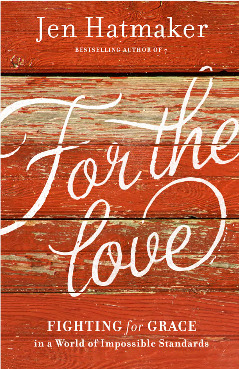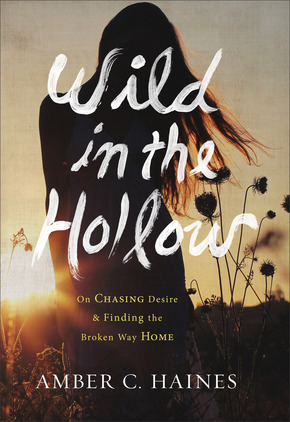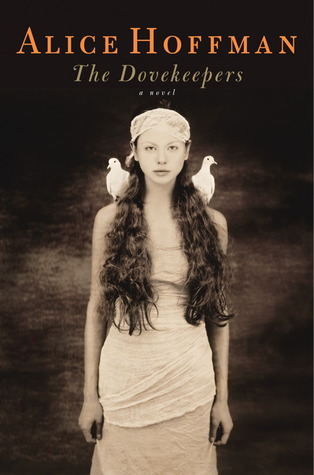I woke up sad this morning because I feel like I’m losing Africa already, and we haven’t been home two weeks yet. I opened the bag of Kenyan coffee and inhaled, as if breathing in the coffee aroma could somehow take me back.
I’ve told you how reluctant I am to start talking about Africa. But talk about it I must. In just a few weeks our team will share with our church and other friends about our trip, so keeping it to ourselves won’t be an option. And maybe talking about it will help me not to feel so sad.
The week before we left for Kenya, I bought these shoes for $8 at a thrift store.
My only other pair of sneakers are gleaming white (from disuse, not because they’re new) and we were told to be prepared for the things we brought to get dirty and possibly ruined. The dirt we walked on was brownish red and everything eventually turns that color over time. These shoes were unrecognizable the day we hiked the volcano.
But I’m getting ahead of myself.
A couple of good pairs of walking shoes are what I needed. I got these because they fit and were in relatively good shape, and I thought maybe I could leave them behind when we were done. I almost did, but I’m glad I didn’t.
We started painting the boys’ dorm on Thursday of our trip. (If you look close enough, you can see a spot of ginger brown paint on the toe of one shoe. This was my color all week long. Ask me about the adventures of Ginger Brown sometime.) Long hours of sanding, taping and painting were ours for three solid days. On the second work day, we decided to start the morning, after breakfast, with a walk to clear our lungs of the fumes and clear our minds for the work ahead.
One group took the second half of the campus tour; another group took on Killer Hill, the steepest hill on campus. That morning I was struggling emotionally and my lungs were heaving with even the smallest trips up the stairs. We were at 7,000 or so feet above sea level and I’m not in the best of shape physically. I opted for the Killer Hill group, even though it meant I was the only female. And the least fit. (Our group included teenage boys who apparently have super-human strength all the time.)
About halfway up Killer Hill (I wish I had a picture to show you what I’m talking about here), I was sure I’d made a mistake in coming. I was lagging behind on an unfamiliar campus, and though we were all headed in the same direction, I was afraid of being left to myself. (Phil and I were at odds with each other as well that morning, so there was not a lot of compassionate care between us.) Our leader and missionary friend Lamar stopped us to catch our breath. I felt like the only one heaving and gasping for breath, and I nearly turned around. But where would I have gone? No one was back at the dorm and I’m not sure I could have found my way.
I took deep breaths and let myself rest and then we continued onward and upward. I could see the top of the hill, and I put one foot in front of the other. I was determined to make it. Sometimes, I am stubborn. And I needed to cure my emotional state with a physical challenge. Sometimes, this is the only way.
We made it to the top. Me, gasping and heaving. I lowered myself onto a retaining wall to rest up. The view over campus was–well, I was about to say “breath-taking” but it was the walk up the hill that took my breath away, not the view. Already on the side of a mountain, we could see the valley below from wherever we were. It wasn’t the view, really, that struck me, but the physical challenge.
The path leveled out and we finished our walk, and my mood improved enough to carry on with the work I had started the previous day. Later, as I climbed the stairs to our room, I noticed that I wasn’t out of breath anymore. Even taking the stairs at a quick pace, I could breathe normally.
Was I acclimating? Or had I pushed my lungs past their limits and somehow increased their capacity for air? (Tell me if there’s science to back this up. I want to know.)
Three days later, I found myself at the base of a dormant volcano, about to start an hours-long climb to the top. As I huffed my way up Killer Hill, I told myself it was practice for the volcano. But as I looked at the challenge ahead of me, I wondered if I’d made a mistake not going to the tea farm with a few members of our group.
I was confident, sort of, because we had done this before. Phil and I hiked a mountain in the Smokies on our honeymoon. But that was nearly a decade and at least 20 pounds ago, pre-children. What in the world was I thinking?
As we ascended, I would ask that question a lot. We took our time, and watched large groups of Kenyan schoolchildren scamper up the mountain ahead of us. Partway up we would have the opportunity to stop, rest and decide if we were continuing on. My goal was to make it at least to that banta–a shelter-like pavilion. I could see it the whole time we hiked.
The path was dry and a bit barren but reminded me of the Bible. I could almost see Jesus and his followers walking paths like these, telling stories along the way, as much to teach as to take their minds off the climb.
A glance over our shoulders showed us beautiful views of the surrounding land. One of our team was certain we’d found the place where Mufasa died in The Lion King. When we looked hard enough, we could see the profile of giraffes near the river bed.
We’d been hiking for an hour or more when we reached the place of rest. We had scrambled over some rocks to reach this point, and our guide and missionary friend Lamar assured us that this was the hardest part of the climb, harder even than summitting.
I believed him, and decided that I would regret it if I didn’t try to make it to the top. When might I get another chance to say I’d been on the rim of a volcano? My breathing was labored, but not in the same way as it had been when I was adjusting to the altitude. I felt like I would if we were on a vigorous hike in Pennsylvania–challenged and winded and maybe a little bit affected by the altitude. I did yawn a lot on the hike to the top, not because I was tired or bored but in need of oxygen.
The journey to the top was a different kind of challenging. Steeper, although the path was clearer. And by this time, the school children were on their way down, so we had to stop sometimes and move to the side, lest we get run into. This was also entertaining, though, because a group of white people climbing a mountain in Kenya is as much a sight as the mountain itself. We often shook hands with a dozen children or high-fived them on the way down. One even declared as he walked past, “I am from Washington. I am a black American.” (President Obama’s visit to Kenya was just a week past at this time.)
I was the straggler again, only this time, there were four of us in the final group that ascended the mountain. We stopped often. Every few steps, it seemed at times. A couple of times I thought I might pass out right there on the mountainside. Phil wouldn’t let me sit down. He pushed me mentally to keep going. Lamar said I could do it and it didn’t matter how long it took. Victoria said she needed to rest, too, and I shouldn’t feel bad about needing to catch my breath.
The closer we got to the top, the harder the climb. Earlier in the week, we had talked about mountaintop experiences and how this trip to Kenya might be one, the kind you don’t want to come down from. And I thought of this as we climbed, how much we crave the mountaintop experience, the high of accomplishment, but easily forget how hard it is to get there in the first place.
We set small goals. “Just to the next curve and then we’ll stop.” “We’ll make it to that tree right there. Ready?” Until finally there was just one more stretch to the top. I gave it everything I had. All I could see ahead of me was sky and then suddenly, I was there. At the top. On the rim of a volcano. I raised my arms in victory and exhaustion. (I also may have peed myself a little. Sweat, pee, it’s hard to tell at that point.)
Inside the crater was a lush forest of green. I wasn’t sure what to expect but it was beautiful and worth every labored breath and calf strain.
We rested on the rim for what felt like hours, and there are more stories for others to tell of climbing into the crater and reaching the crater floor. We walked a little ways around the rim, but I was content to have made it to the top.
Comparatively, the trip to the base was a breeze. It was easier to run/jog and let gravity carry you, and I felt all kinds of free as I careened down the mountainside.
I just hiked to the top of a volcano. I kept telling myself in case later I wouldn’t believe it. I was amazed at what my body–my almost middle-aged, out-of-shape body–could do. It could do far more than I give it credit for.
When we packed up the next night for our trip home, I decided to bring the shoes with me, as a reminder of what I could do. Earlier this year, I set myself a goal to lose some weight and as of leaving for Kenya, I’m fairly certain I had gained weight. Hiking the volcano and walking up Killer Hill reminded me that my body is strong and capable of more than I allow it and that it is possible to push past my endurance and survive.
Now that we’re back, I find that the work my body did in Kenya hasn’t disappeared. The kids and I have taken several walks–the same ones we took earlier in the summer–and I can breathe normally for the duration, even if I am walking at a faster pace or up a hill. I am by no means a star athlete now because I climbed a volcano. But I feel like a warrior. Or at least, a warrior in training.
I can’t wait to get into a rhythm of physical activity and see what my body can do. (After school starts next week, I aim to be active daily.) And it’s not just for the physical benefit but the mental and spiritual as well. Maybe I’ll save those applications for another post.
I didn’t expect to come home from Kenya with a renewed sense of my physical capabilities. But it’s one of the clearest and most amazing takeaways I had from the whole trip.
And just to add to my own sense of warrior-ness, I looked up the altitude of the mountain we climbed in the Smokies and compared it to the one in Kenya. I was almost 2,000 feet higher in Kenya than in Tennessee. (That shouldn’t surprise me, but it does. And it makes me feel like I could take on another mountain. And another.)
 Days before we hiked it, we could see Longonot in the distance, from our room. It was my first view of Kenya when I woke up Wednesday morning. It was impressive to gaze at from miles away.
Days before we hiked it, we could see Longonot in the distance, from our room. It was my first view of Kenya when I woke up Wednesday morning. It was impressive to gaze at from miles away.
After we hiked it, I took this picture to remember that we had seen it up close. We had, in a way, conquered it.
I’m grateful to have learned something about myself in a place I didn’t expect it.


























